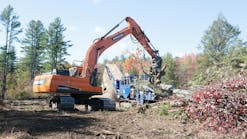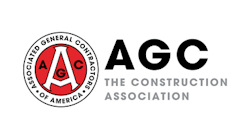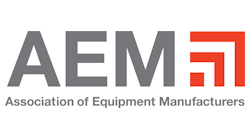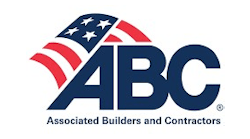Over the past 10 years or so, heavy-construction equipment operators have added a new word to their vocabulary: uptime. Or, more accurately, an increasingly competitive construction economy has introduced them to the word. More and more, managers are looking at ways to increase equipment utilization and return on assets.
On a day-to-day basis, one of the best ways to maximize uptime is to get serious about preventive maintenance. Tracking equipment hours for the purpose of scheduling maintenance to prevent problems before they arise is one part of the equation, but the ideal would be a maintenance program that both prevents continual major repairs and has maximum intervals. Zeke Zakotnik would tell you that automatic lubrication systems are a key component of an ideal program.
Zakotnik, equipment manager of aggregates producer and general contractor Staker & Parson Companies of Ogden, UT, can attest to the positive changes that the automatic lubrication systems have provided Staker & Parson in the past couple of years since the companies started installing them on their equipment. “The operator is the guy who’s going to run the machinery, not necessarily maintain it per se,” says Zakotnik, who’s responsible for the maintenance of about 70 front-end loaders, 25 excavators, and 40 graders. The companies have installed auto lube systems on all of Zakotnik’s excavators and loaders. “It’s not what they do; they’re not maintenance people. We know that the equipment is getting greased where it’s supposed to get greased now.”
While it might never be possible to fully automate earthmoving, mining, and paving operations, lubrication is a function that makes plenty of sense to automate. The pins and bushings on high-production machines like Zakotnik’s equipment lend themselves to greasing at standard intervals, so the systems don’t have to be particularly “smart” in terms of detecting a low level of grease on key friction points and dispensing lubricant, for instance. Greasing at standard intervals maintains a “grease donut” around pins and bushings that can last an entire shift or longer; each operator becomes an exception manager with respect to the system by regularly monitoring it.
At the same time, the systems allow the maintenance staff to function as maximizers of equipment uptime. The reason? With reasonable certainty that the lubrication systems are continually operating, the maintenance staff can schedule pin and bushing replacement at regular—and, more importantly, greater—intervals. This scenario prevents the alternative of having to make major repairs at unforeseen times due to catastrophic breakdowns, which can delay repairs of other equipment and reduce the operating effectiveness of a significant portion of the equipment fleet.
Zakotnik would tell you that he gets a tangible return from the systems in terms of machine uptime, operators’ productive utilization of equipment (in contrast to maintenance), reduced replacement of pins and bushings, and, most importantly, dollar savings.
Until a couple of years ago, Staker & Parson operators would spend about 20 minutes visually inspecting fluid levels and the condition of moving parts, as well as lubricating the pins and bushings, at the start of their shifts. The pre-shift walkaround is still necessary, but the task of lubrication has been eliminated. This has cut the pre-shift downtime by 50%, or 10 minutes. Multiply 10 minutes by 70 loaders and 25 excavators and you get an additional 15 hours of productive equipment utilization per day. With operators making roughly $17 per hour, that’s an additional $255 of productive equipment utilization per day. Extrapolate that $255 over, say, 300 working days a year and Zakotnik and Staker & Parson are getting an additional $76,500 of actual human operation of equipment every year
Just as importantly, Zakotnik reports that his auto lube systems have cut the incidence of pin and bushing replacement by 75%. “Now we can get a couple of seasons out of a set of pins and bushings—before, it was maybe twice a year that the mechanics had to go out and change those out,” he says.
A residual benefit Staker & Parson gains from the auto lube systems is in the improved productivity of Zakotnik’s maintenance staff. “I would say that for a 980-style loader, it’s probably saving our guys 20 minutes of grease time per machine,” he says. “Not only is it saving the operators time, it’s also saving our guys time to go out in the field to lube it.”
With manual lubrication, “I know that when our lube techs would get out there, they would completely grease the machine,” he continues. “I know it would get done at least every 250 to 300 hours because my guys were doing it, but the rest of the time, it was my hope that the operators were doing it. A lot of times, we’d get out there and the bucket would be squeaking. That’s just not what they do; they’re not tuned to the fact that we’d have a dry bushing or pin. Now, our techs just check to make sure that the [grease reservoir] is full.”
Not to be overlooked are the safety benefits of installing these systems. In many cases, auto lube systems eliminate the need for operators and maintenance staff to climb on equipment to lubricate pins and bushings, a practice that carries plenty of risks of personal injury.
So the equipment, human, and financial benefits of auto lube systems are fairly obvious. But to the contractor who is thinking seriously of getting them installed on future or existing equipment, the differences in systems might not be. Here are some things to consider when taking the first step in automating fleet operations by purchasing and using automatic lubrication systems.
System Features
Two basic types of auto lube systems are available: progressive and parallel.
In a typical progressive system, as the piston moves from right to left, it forces grease through valve outlets located on each side of the secondary valve. The piston alternately forces grease through the valve outlets on each side of the secondary valve via its side-to-side motion. When the preset pressure at the lube point has been reached—forcing the appropriate quantity of grease through the valve outlets—the secondary valve closes, and the pump continues to generate pressure for the next secondary valve in the lubrication sequence.
The most-often-cited advantage of progressive systems involves system monitoring, to be covered in greater depth later. But the primary advantage to these systems lies in the fact that only one point—the central valve, as opposed to multiple valves—needs to be monitored for proper operation through various manual or automated methods. On the flip side, this can be a disadvantage as well: If one lube point stops taking grease, the whole system shuts down and the operator might not notice it immediately.
Differences among manufacturers’ systems that the contractor should inquire about include the durability and design of pumps and valves, as well as the guarding for lubricant hoses—the most vulnerable components of a system.
It’s wise to ask potential system suppliers about the corrosion and vibration resistance of their pumps and valves, as well as what materials are used in their manufacturing. Because these systems must operate in extreme temperatures and high-vibration situations, the materials used are critical. Without system reliability, the contractor might as well continue manually lubricating the equipment.
A couple of manufacturers offer parallel systems, which lubricate friction points simultaneously. One advantage of this type of system is that if one lube point is not being lubricated, the remaining points are still lubricated. In addition, increasing the amount of grease output by switching to a larger-diameter injector is basically as easy as changing a spark plug on a car.
The design of pumps and valves varies somewhat between both types of systems. One manufacturer of parallel systems features pumps equipped with follower plates that seal the lubricant from air and water condensation, which can cause lubricant oxidation that is harmful to metallic friction points. In regard to valves or injectors, the typical manufacturer uses a spring that returns the piston to its starting position after one lubrication cycle. A couple of manufacturers, however, use grease pressure to return the piston to its starting position.
One of these systems features a pump linked to distribution blocks, and each injector is individually controlled by the pump, which has from one to three outlets. The distribution blocks are designed according to the quantity of grease to be dispensed to the lubrication points. The pump is equipped with a sensor that records the number of pump rotations. The system also features a lubricant reservoir equipped with a follower plate located at the top level of the lubricant that protects the lubricant from contamination.
Another significant concern the contractor should raise with any manufacturer relates to protecting the most vulnerable component of an auto lube system: the hoses leading to the secondary valves. Invariably, contractors and manufacturers cite broken hoses—a flexible and vulnerable system component that operates in a harsh environment—as the most common cause of system malfunction. So the extent of a manufacturer’s experience with installing these systems with well-positioned guarding for the hoses is an important inquiry to make.
Payback
Another way of looking at the benefits of auto lube systems is to determine how quickly the systems pay for themselves. Zakotnik knows that his systems pay for themselves in less than a year, given the fact that, typically, his staff doesn’t need to change pins or bushings on loaders and excavators within the first year of installation—compared with the old practice of replacing pins and bushings in the first year. His experience is consistent with that of other contractors, as well as system manufacturers. The more often the equipment is utilized, the shorter the payback period because pin and bushing replacement would occur more often in highly productive situations.
Brandon Frei, equipment manager at Kennecott Utah Copper, oversees equipment maintenance for one of the world’s largest open pit mining operations in Bingham Canyon, UT. His payback on his parallel-type systems is only 120 days.
“My pins and bushings on my 980 loaders were going out every four months, and it was about the same with excavators,” reports Frei, who oversees a fleet that includes a combined total of about 90 loaders and excavators, as well as 14 backhoes. “Now I’m getting nine months out of my pins and bushings. And these are production machines; they run 24 hours a day—it’s about double the life.” Just one bushing change equals the cost of one of Frei’s auto lube systems, he adds.
Prior to adopting the auto lube systems, Frei and his staff lubricated the friction points on earthmoving equipment manually, with all of the pitfalls of that method. “We relied on the lube truck operators, who would take turns going around,” he says. “We’d rely on the operators, and we had twice the number of pin and bushing changes with our 980 loaders and excavators, and we couldn’t get a consistent routine because we’d change operators so much. We’d have to rebuild a 980 in two years.” Now, “All the points are getting greased versus someone saying that they’re doing it.”
Frei says he first saw one of the systems in operation on an over-the-road hauler truck, which used its system for spring bushings and steering components. “We started using the system on certified rebuilt [earthmoving equipment], and then we started phasing them in at the rate of about three a month,” he says. To date, about 70% of Frei’s fleet is equipped with auto lube systems.
One manufacturer provides software that enables customers to input the costs associated with equipment repair, equipment downtime, and the labor required for manual lubrication to help them calculate the payback period for an auto lube system. Another manufacturer provides cost breakdown scenarios for the payback its system yields for front-end loaders and excavators. Including the costs of parts, repair labor, and manual lubrication, the payback periods for a 200-horsepower front-end loader, a 20-metric-ton excavator, and a 45-metric-ton excavator are 12 months, 10 months, and under 10 months, respectively.
Monitoring
The typical contractor who has auto lube systems installed on earthmoving equipment doesn’t delude himself into thinking that the systems are foolproof, or that they are free of monitoring. Although the savings these systems provide in dollars and time are significant, the potential exists for these systems to detract from, rather than add to, the operational efficiency of an equipment fleet without a little vigilance.
Several means are available to alert the operator and/or management that a system is malfunctioning. In many cases, a light is mounted in the cab and goes on when triggered by a proximity switch that is activated when a valve piston doesn’t go through its motions, or if the switch closes the valve before the proper amount of grease could have been dispensed. One manufacturer of progressive systems offers an automatic relief indicator that spouts grease when a particular valve is shut and does not take in the lubricant. Although the grease flow continues throughout the sequence of lubrication points, the automatic relief indicator provides visual evidence of a system malfunction. Some systems also send a signal when the grease reservoir gets to a low level. Alternatively, the grease reservoir might be designed such that the grease level is visible to the operator or maintenance staff.
One manufacturer’s system features an electronic control unit equipped with a diagnostic system that stores data such as service hours and fault codes. The contractor can access the data by using software that is used with a notebook computer or a more rugged handheld device supplied by the manufacturer.
Kennecott Utah Copper and Frei have gone really hi-tech with system monitoring. The company’s auto lube systems are linked to a global positioning system (GPS) location tracking system that also monitors the system lubricant level.
“We do hold the operator accountable if the grease does go down and we get a warning light from the cab and a bushing goes down,” says Frei. “I also run a GPS tracking system on my equipment, and I can also ping them on my computer. It’s all connected to the system. If it runs out of grease, it’ll tell me on my computer. If they’re low on grease, it’ll e-mail the supervisor automatically.”
Regardless of available technological indications of system problems, a task that should never go away is the operator’s inspection of the machine prior to the start of a shift, one that should already include a fluid level check. During this walk-around inspection, the operator can look for the “grease donuts” on friction points as an indication that the auto lube system has been working properly.
Goo and Climate
Under normal circumstances, pins and bushings on loaders, excavators, and graders should be lubricated with EP-2, also commonly called No. 2 grease—whether they are serviced automatically or manually. But the winter months, particularly in northern climates, might force adjustments.
In temperatures well below freezing, however, the contractor might have to make adjustments to keep the grease flowing.
The most common adjustment is switching to less viscous EP-1 or even EP-0 grease during periods of cold weather. Some manufacturers, however, offer pumps with variable power. “We’ll go in and change the settings on the pumps,” Frei says. “If the operator thinks it’s greasing too much, we’ll adjust it. We have the automatic settings in the cab—low, medium, and high settings.” Another solution to the cold-weather problem is to design systems for cold-weather operation, meaning pumps with higher ratios and pump lines with a larger diameter.
As for the chemical makeup of the grease itself, some system manufacturers offer their own, which is designed to prevent auto lube systems from getting clogged. Auto lube system manufacturers warn against using grease with Teflon, which is designed to increase water resistance, or graphite, which sticks to metal and can clog the valves or injectors.
Sentiment toward the additive molybdenum disulfide is mixed. Some manufacturers express the same concerns about grease containing “moly” as they do about products containing Teflon or graphite. But Greg Raley, transport product application specialist for Shell Lubricants in Houston, explains the value of this additive in off-road equipment applications.
“There are a number of equipment builders that specify 3% to 5% moly in some of their applications,” says Raley. “When you start using a moly grease, you’re really working your equipment hard. Moly is considered a solid lubricant and helps with shock loading, like when you drop a bucket, and hitting rock when you’re trying to tear a piece of a mountain away—that’s where moly can really help with shock loading and protect the bearings. I wouldn’t use moly in what I’d call a high-speed bearing,” Raley adds.
One manufacturer relates the fact that the contractor can still use No. 2 grease in cold weather, so long as the grease is designed for cold weather. The question the contractor should ask is whether the lubricant has a low cold test, making it more suitable for cold-weather use. Greases with lighter base fluids and fewer polymers tend to yield a low cold test. Aluminum complex is another material often added to grease to increase water resistance, high-temperature operating ability, and shear stability, but the presence of aluminum complex also makes grease more thixotropic (subject to hardening), which makes it less likely to pump through an auto lube system in cold weather.
The Case for Manual Lubrication
Perhaps because of the initial cost of purchasing an auto lube system and concerns about system monitoring, a few contractors still believe in manual lubrication. And manual lubrication technology is serving their needs. Battery-powered and electric grease guns are making the manual lubrication process quicker and less reliant on physical strength. An increased awareness of ergonomics and the need for lighter weight exist, too. One manufacturer has designed a portable grease gun with evenly balanced weight, a soft rubber trigger, and a shoulder strap that allows the operator to climb onto machinery with both hands free. In addition, the grease gun features a microprocessor that maintains a constant pressure and a motor that stops when the trigger is released, which minimizes contact between the grease and air to prevent grease contamination.
Ralph Scheller, equipment manager at JH Rudolph, an Evansville, IN–based asphalt and concrete contractor whose parent company operates several quarries, says that manual lubrication continues to work well for the company’s 220 pieces of equipment that include a few loaders and excavators.
Management did investigate auto lube systems, but concerns about initial cost and monitoring made the systems less attractive, Scheller says. “Most of our machines are not assigned to the same operator, but the same operator operates them about every day,” so they’re familiar with their machines and take care of them, says Scheller.
But Travis Hartley, equipment manager for Heber City, UT–based RJ Enterprises’ Utah Stone division, cites greater reliability in auto lube systems as the main reason why he prefers them.
Before, “It probably took our people about half an hour to an hour to lube the pins and bushings on an excavator,” Hartley says. “And by the time you’d deal with all these grease fittings, sometimes they’d be broken or damaged. Did he grease it every day, or just Monday and Friday? You don’t really know that unless you’re watching them all the time, which I can’t. The main thing is just the overall satisfaction of knowing that it’s getting done—that’s probably the biggest thing.”








